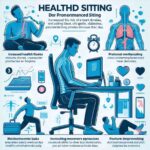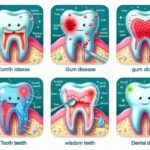Microplastics, those tiny troublemakers, infiltrate our environment from various origins, contributing to a pervasive pollution problem. Let’s uncover the primary sources responsible for seeding these miniature menaces into our ecosystems.
Key Takeaways:
- Microplastics originate from diverse sources, including the breakdown of larger plastic debris, microbeads in personal care products, synthetic textile fibers, and industrial processes.
- Urban runoff, wastewater discharge, atmospheric deposition, and improper waste management exacerbate microplastic contamination in terrestrial and aquatic environments.
- Understanding the sources of microplastic pollution is crucial for implementing effective mitigation strategies and safeguarding environmental and human health.
Sources of Microplastic Pollution:
- Plastic Fragmentation:
- The gradual breakdown of larger plastic items, such as bottles, bags, and packaging, through mechanical and environmental processes releases microplastic particles into the environment.
- UV radiation, wave action, and abrasion contribute to the fragmentation of plastic debris, generating countless microplastic fragments.
- Microbeads in Personal Care Products:
- Microbeads, tiny plastic spheres used in exfoliating scrubs, toothpaste, and cosmetics, represent a significant source of microplastic pollution.
- These minuscule particles wash down drains, bypass wastewater treatment processes, and enter aquatic ecosystems, where they accumulate and pose risks to marine life.
- Synthetic Textile Fibers:
- Synthetic clothing, including polyester, nylon, and acrylic fabrics, shed microplastic fibers during washing and wear.
- Laundry wastewater transports these fibers to sewage systems and water bodies, contributing to the pervasive distribution of microplastics in aquatic and terrestrial environments.
- Industrial Processes:
- Industrial activities, such as plastic manufacturing, processing, and recycling, release microplastic particles into the environment through air and water emissions.
- Plastic pellets, known as nurdles, used as raw materials in manufacturing, are prone to spillage during production, transport, and handling, leading to microplastic pollution in waterways and coastal areas.
Secondary Sources and Pathways:
- Urban Runoff:
- Stormwater runoff from urban areas carries microplastics from streets, sidewalks, and landfills into rivers, lakes, and oceans.
- Plastic litter accumulates in urban environments, where it undergoes fragmentation and erosion before being transported by runoff to aquatic ecosystems.
- Wastewater Discharge:
- Effluent from wastewater treatment plants can contain microplastics derived from domestic, industrial, and commercial sources.
- Despite treatment processes, microplastics may persist in treated wastewater and enter receiving water bodies, posing risks to aquatic organisms and ecosystems.
- Atmospheric Deposition:
- Atmospheric transport of microplastics via wind and precipitation deposits these particles on land and water surfaces.
- Microplastic contamination of remote and pristine environments, including Arctic ice and mountain ecosystems, highlights the global reach of atmospheric deposition.
Conclusion:
Microplastic pollution emanates from a myriad of sources, each contributing to the widespread dissemination of these persistent pollutants. Addressing this multifaceted issue requires concerted efforts across sectors to reduce plastic production, enhance waste management practices, and promote sustainable alternatives.
By identifying and mitigating the sources of microplastic pollution, we can stem the tide of plastic contamination and safeguard the health of our planet for generations to come.
Reflect on your daily activities: How can you minimize your contribution to microplastic pollution? Share your insights and actions below to inspire others to join the fight against plastic pollution!












